
Icon in the design world Marva Griffin chats to Cristián Mohaded about design, craftsmanship and his collection Fuga for cc-tapis
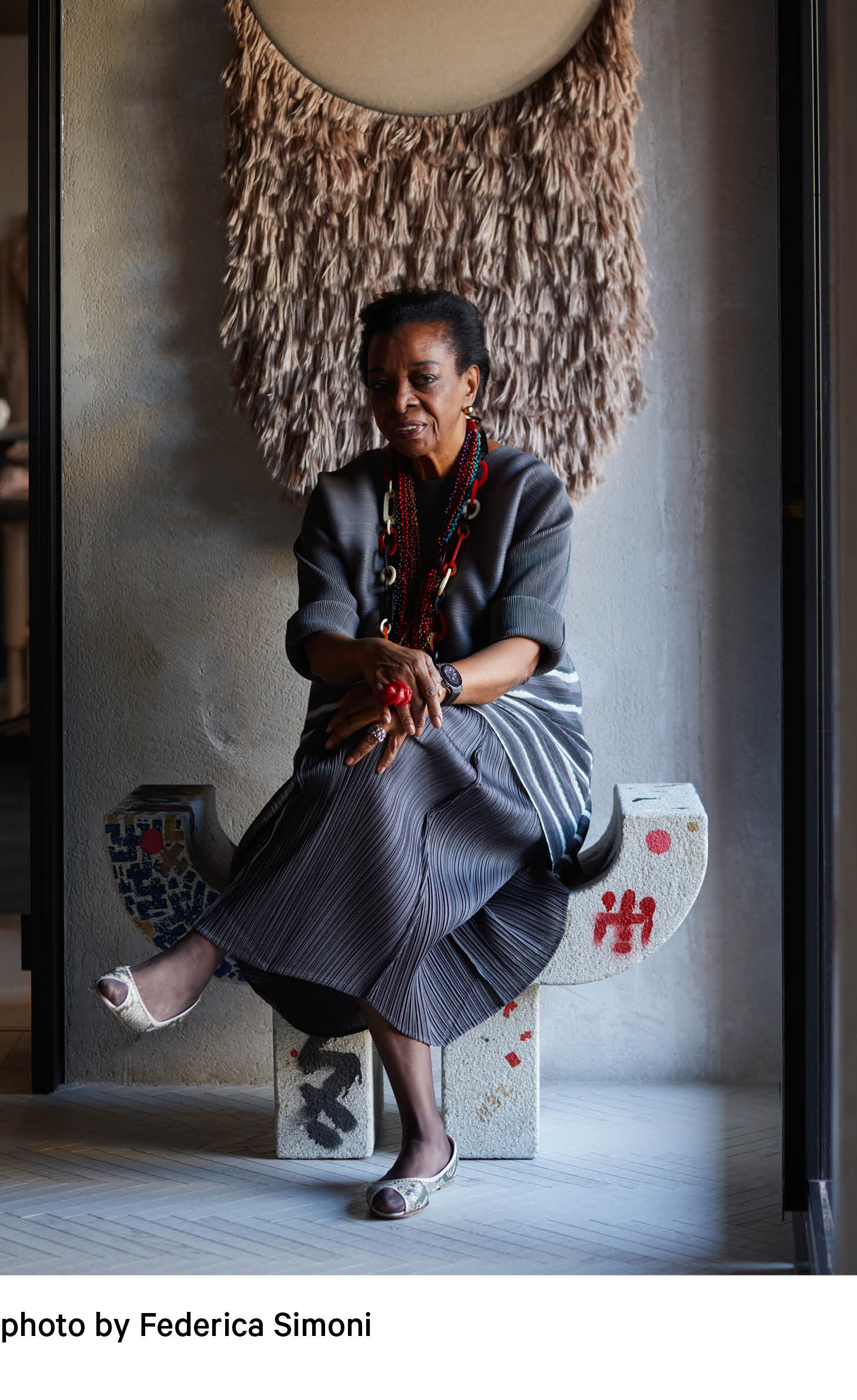
Marva Griffin, founder and curator of the SaloneSatellite and director of the International press office for the Salone del Mobile, chats to designer and artist Cristián Mohaded about his relationship with art, design and craftsmanship. Both native to South America, Marva from Venezuela and Cristian from Argentina, Marva discovered Cristián’s work at the SaloneSatellite 2018 and has been following his work ever since.
Cristián Mohaded is a designer and artist whose work explores the connection between craftsmanship and design. A prolific drawer, Mohaded begins his process by sketching, his concepts and ideas evolve and take shape on paper. He then works closely with artisans who develop his penmanship into art and design. For the Fuga Collection, it was cc-tapis who transformed his vision into a collection of 3 hand-knotted rugs and Marva Griffin explores his story, process and ideas:
See the Fuga collection here >>>
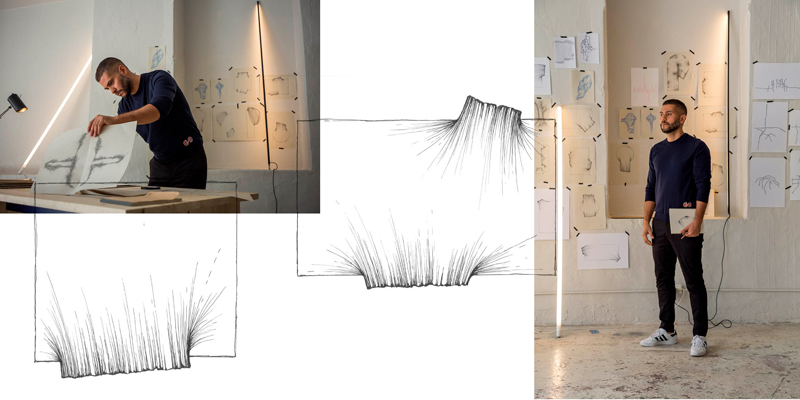
MY CONVERSATION WITH CRISTIÁN MOHADED
by Marva Griffin
Marva: Hello Cristián, I don’t want this to be an interview, but rather a conversation between us to find out about you and learn about your career in the world of art and design. I hope that if you are in your beloved Argentina, you are well and with your family despite the situation that everyone in the whole world is experiencing right now. // ESP: Hola Cristián, quiero que esta no sea una entrevista, mas bien una conversaciòn entre nosotros para saber de ti y conocer tus pasos en el mundo del diseño y del arte. Espero que si estás en tu querida tierra Argentina te encuentres bien en unión de tu familia a pesar de la situación que todos en el mundo entero estamos viviendo.
In what beautiful place in Argentina were you born? Where did you study Art and Design? // ESP: En que lugar hermoso de Argentina naciste? Donde tuvieron lugar tus estudios de Diseño y Arte?
Cristián: I was born in Recreo, which is a town in the extreme southeast of the province of Catamarca, Argentina. When I finished high school, I moved to the city of Cordoba to study Industrial Design at the National University of Cordoba. I was attracted to drawing and painting, and everything related to art and sculpture from a very young age, so in my free time I would explore my creativity in that area. I was never able to do a degree in art or drawing, but somehow my motivation and curiosity were latent in this regard. // ESP: Nací en Recreo, un pueblo ubicado en el extremo sudeste de la provincia de Catamarca, Argentina. Luego al terminar mis estudio secundario me mude a la ciudad de Córdoba a estudiar la carrera de Diseño Industrial en la Universidad Nacional de Córdoba. Desde muy chico me atrajo el dibujo y la pintura, y todo lo referido al arte y la escultura, por lo que en mis tiempos libres buscaba explorar ese ala creativa. Nunca pude hacer una carrera de grado de arte o dibujo, pero de algún modo mi motivación y curiosidad estuvieron latentes en este sentido

Marva: Where do you live and where do you work? // ESP: Cuéntame donde vives y donde trabajas?
Cristián: Today I consider myself a kind of nomad. I travel a lot for my work, I spend weeks or months in one or another city in the world, be it Barcelona, Milan, or Buenos Aires. I really enjoy the possibility that I have of constantly meeting people and seeing new places through my work. They are cities that I’m really attracted to due to their diversity, their architecture, their energy, and their lifestyles.// ESP: Hoy me considero una especie de “nómade” , viajo mucho por mi trabajo, estoy semanas o meses en alguna u otra ciudad del mundo, sea en Barcelona, Milán o Buenos Aires. Disfruto mucho de esta posibilidad que tengo por mi trabajo de estar constantemente conociendo gente y nuevos lugares. Son ciudad que me atraen mucho por su diversidad, por sus arquitecturas, por sus energías y sus estilos de vida.
Marva: Why Milan, Italy? How often do you visit? // ESP: Porque Milán, Italia? Con que frecuencias la visitas?
Cristián: It is undoubtedly one of the most creative and fantastic cities I have ever visited, as well as being the design capital, and since 2005, the first time I visited the city, I haven’t stopped going back. I have great friends who helped me to get to know and feel part of the city. “Ti voglio bene Milano” is the first thing I say every time I arrive in Milan. // ESP: Sin duda es una de las ciudad mas creativas y fantásticas que he visitado, ademas de ser la principal capital del diseño, y desde el 2005 _la primera vez que visite la ciudad_ no deje de visitarla. Tengo grandes amigos que me ayudaron a conocer y sentirme parte de la ciudad. “Ti voglio bene Milano” es mi primera frase cada vez que llego a Milán.
Ver essa foto no Instagram
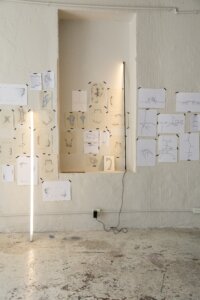
Marva: Do you feel more like an artist or a designer? // ESP: Te sientes mas artista o diseñador?
Cristián: My profession is that of a designer, but my interests have always been artistic. Today the boundaries between the two are blurred. I think I have a good handle on hybrid creative languages that intersect and mix. I am an artist with a designer’s ideas, and an artist with the tools of a designer. // ESP: Mi profesión es la de diseñador, pero mis intereses siempre fueron artísticos. Hoy los limites entre ambas se desdibujan, se empatan. Creo poder manejar lenguajes creativos híbridos, que se cruzan y se mezclan. Soy un artista con ideas de diseñador, y un artista con herramientas de una diseñador.
Marva: How do you differentiate your design and artwork? What is your relationship with each of these areas? // ESP: Como diferencias tus trabajos de diseño y arte, y cual es tu relación con cada uno de estos temas?
Cristián: Design has different work routes; they are more pragmatic and respond to the demands of the clients I work with. I like to provide both creative and rational solutions at the same time. I work with clients in Argentina, the United States, and Europe, and this allows me to have a lot of versatility in my work and my approach to design. But when I have this artistic space where I can play and explore other resources and tools that I have cultivated in my career, I allow myself to be more spontaneous and intuitive.// ESP: El diseño tiene rutas de trabajo diferentes, son mas pragmáticas y que responden a las demandas de los clientes con los que trabajo, me gusta dar soluciones creativas y racionales al mismo tiempo. Trabajo con clientes en Argentina, Estados Unidos y Europa, y esto me permite tener mucha versatilidad en mi trabajo y mi enfoque de diseño. Pero cuando tengo este espacio artístico en donde puedo jugar y explorar otros recursos y herramienta que fui cultivando en mi carrera, me permito ser mas espontáneo e intuitivo.
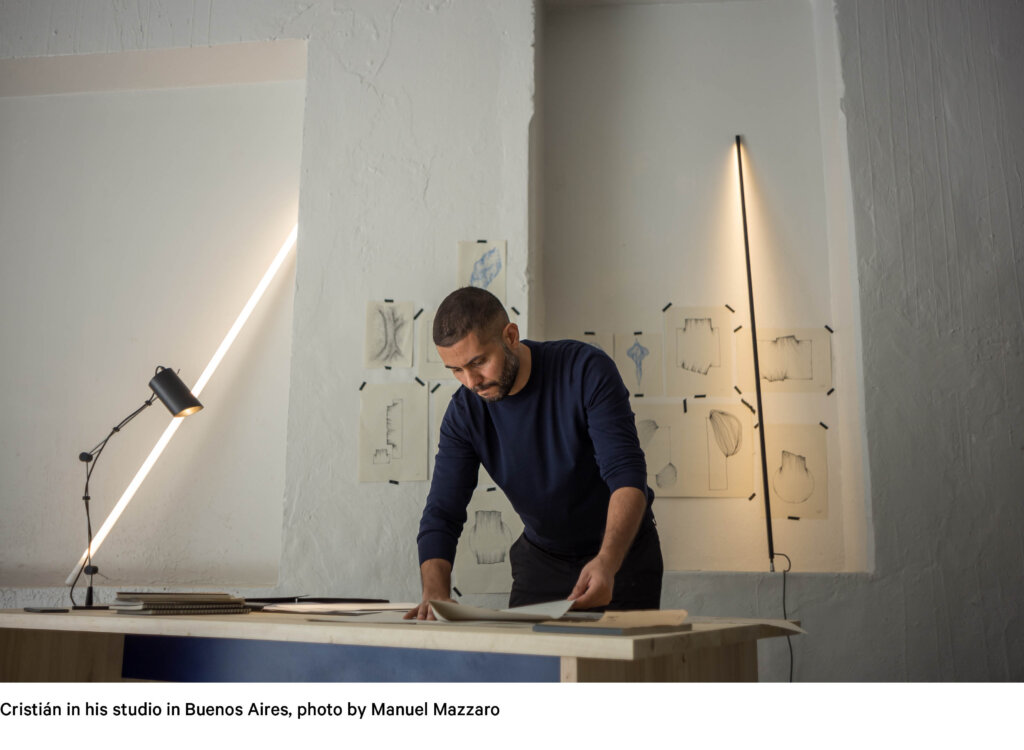
Marva: Because of your beautiful artisanal work, I know that you work with Argentine artisans. How much participation do artisans have in your project? What area of Argentina do they come from? // ESP: Por tu bello trabajo artesanal sé que trabajas con artesanos argentinos. Cuanta participación tienen los artesanos en tus proyecto? De que zona de Argentina vienen?
Cristián: Just over 10 years ago I began researching for the link between design and crafts in my country, design being the tool that can bring about significant change in the field of crafts.
From my perspective as a designer, I understand that we must find a way to create bridges of contact between crafts, know-how and design, which should help us to strengthen ourselves as a society, to mature and to grow. And I think this is due to a wrong and unfavourable vision for the discipline, which is loaded with misconceptions of what we define and understand as design. We don’t understand the value that design can have for a society and an economy. I am working on many projects that link these concepts with more than 20 artisans from different locations in Argentina, and different realities. This is very motivating for me, I feel that in some way I can build these bridges of contact, which will surely become stronger over time.// ESP: Hace un poco mas de 10 años comencé esta búsqueda de la vinculación entre el diseño y la artesanía de mi país, entendiendo al diseño como esa herramienta que puede generar cambios fuertes en el campo de la artesanía. Desde mi lugar como diseñador entiendo que debemos buscar la manera de generar puentes de contacto entre la artesanía, el saber hacer y el diseño, que nos deben servir para fortalecernos como sociedad, para madurar y para crecer. Y creo esto se debe un visión errada y no favorable para la disciplina, cargada de conceptos equívocos de lo que definimos y entendemos como diseño. Sin entender el valor que puede tener para una sociedad y una economía el diseño. Estoy trabajando en muchos proyectos que vinculan estos conceptos, con mas de 20 artesanos de diferentes localidad de Argentina, y diferentes realidad. Esto es muy motivador para mi, siento que de alguna modo puedo generar estos puentes de contacto, que seguramente con el tiempo serán mas fuertes.
Marva: Tell me about FUGA, which is the reason for this conversation. FUGA is a wonderful rug collection that includes action, energy, expansion, and the relationship that you have created to enrich the collection for cc-tapis. // ESP Hablame de FUGA, que es el motivo de esta conversación. FUGA es una maravillosa alfombra que comprende acción, energía, expansión y relación, que has creado para enriquecer la colección de la empresa CC Tapis.
Cristián: Yes, it is my first collaboration with the brand, and as you describe it, FUGA is about energy that expands in the fabric through each of its knots, almost like blood flows in our bodies. I worked on literally hundreds of drawings, experimenting with different ideas, and then defining their concept; everything evolved on paper. A line on a paper can express much more than we think. The action of drawing is a unique moment and time between the mind and the hands, it is a way of expressing ourselves that can define us and also allow us to find ourselves. Simple and delicate markings became merely a consequence of the shifting mass I was moving on paper. I was curious about the movement, the flow, the dynamic energy that can be created when borders become blurred, or rather when borders are broken. Escape has no limits, it breaks form. A collection that plays on its power of attraction, creating a connection with the space and the people around it. // ESP: Si, es mi primer colaboración con la marca, y tal como lo describes, FUGA se trata de energía que se expande en el tejido a travez de cada uno sus nudos, casi como la sangre fluye en nuestros cuerpos. Trabaje literalmente en cientos de dibujos, experimentando con diferentes ideas y que luego fueron definiendo su concepto, todo evolucionó en el papel. Una linea en un papel puede expresarnos mucho mas de lo que pensamos, la acción del dibujo es un momento y tiempo único entre la mente y las manos, es una manera de expresarnos que puede definirnos y también nos permite encontrarnos. La creación de marcas simple y delicada se convirtió simplemente en una consecuencia de la masa cambiante que estaba moviendo en el papel. Tenía curiosidad por el movimiento, el flujo, la energía dinámica que se puede crear cuando las fronteras se vuelven borrosas, o más bien cuando se rompen las fronteras. Fuga no tiene limites, rompe las formas. Una colección que juega con su poder de atracción, creando una conexión con el espacio y las personas que lo rodean.
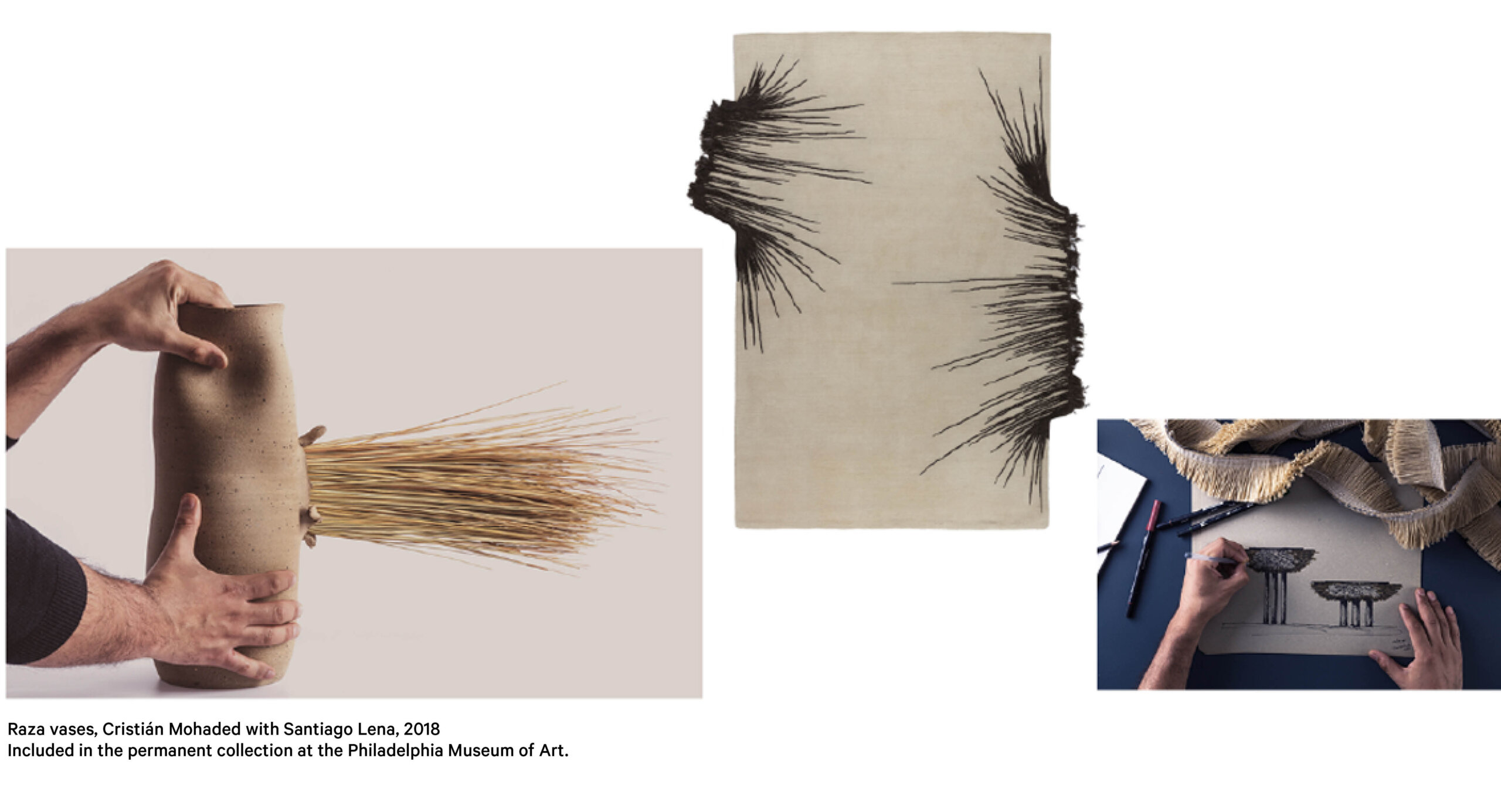
See the Fuga collection here >>>

Marva: In the world of design today, the most used word is “sustainability”. What is your idea of sustainability? // ESP: En el mundo del diseño hoy en dia la palabra mas usada es “sostenibilidad”. Cual es tu idea de sostenibilidad?
Cristián: Sustainability refers, by definition, to the ability to respond to current needs without compromising the capacity of future generations. Based on this, design has the duty to respond to these new scenarios, design is the answer to problems; it is a discipline that has particularly important tools to offer science, education, politics, health, and other areas in which society expects answers to lead a better quality of life. I believe that our future is tied to what we propose and do as designers. We must be respectful in how we act. In any case, I believe that society as a whole today has the duty and responsibility to rethink consumption patterns and models. Unbridled industrialisation and the misuse of our resources prove this. A large part of society is becoming aware of what we consume, what we eat, what we use, where it comes from, how it is made, what materials it is made of, where it comes from, and where these products end up.
Design has an especially important role in these new scenarios, and we must be very attentive to be able to provide sustainable solutions today and for the future of new generations; we cannot continue to threaten our planet, it’s our only home. // ESP: La sostenibilidad se refiere, por definición, a la capacidad de dar respuestas a las necesidades actuales sin comprometer la capacidad de las generaciones futuras, partiendo de esto comparto que el diseño tiene el deber de dar respuestas a estos nuevos escenarios, el diseño es la respuesta a los problemas, es una disciplina que tiene herramientas muy importantes para ofrecer a la ciencia, a la educación, a la política , a la salud, y otras áreas en la que la sociedad espera repuestas para llevar una mejor calidad de vida. Creo que nuestro futuro esta atado a lo que como diseñadores propongamos y hagamos. Debemos ser respetuosos en como accionamos . De todos modos creo que la sociedad entera tiene hoy en sus monos el deber y la responsabilidad de repensar los modos y modelos de consumo. La industrialización desfrenada y la mal uso de nuestro recursos lo demuestran. Una gran parte de la sociedad se esta dando cuenta de esto: que consumimos, que comemos, que usamos, de donde viene, como de hace, que materiales lo componen, de donde viene y en donde terminan estos productos. El diseño tiene un rol muy importen en estos nuevos escenarios y debemos estar muy atentos para poder dar soluciones sostenibles, para hoy y para el futuro de las nuevas generaciones, no podemos seguir amenazando a nuestro planeta, nuestro único hogar.
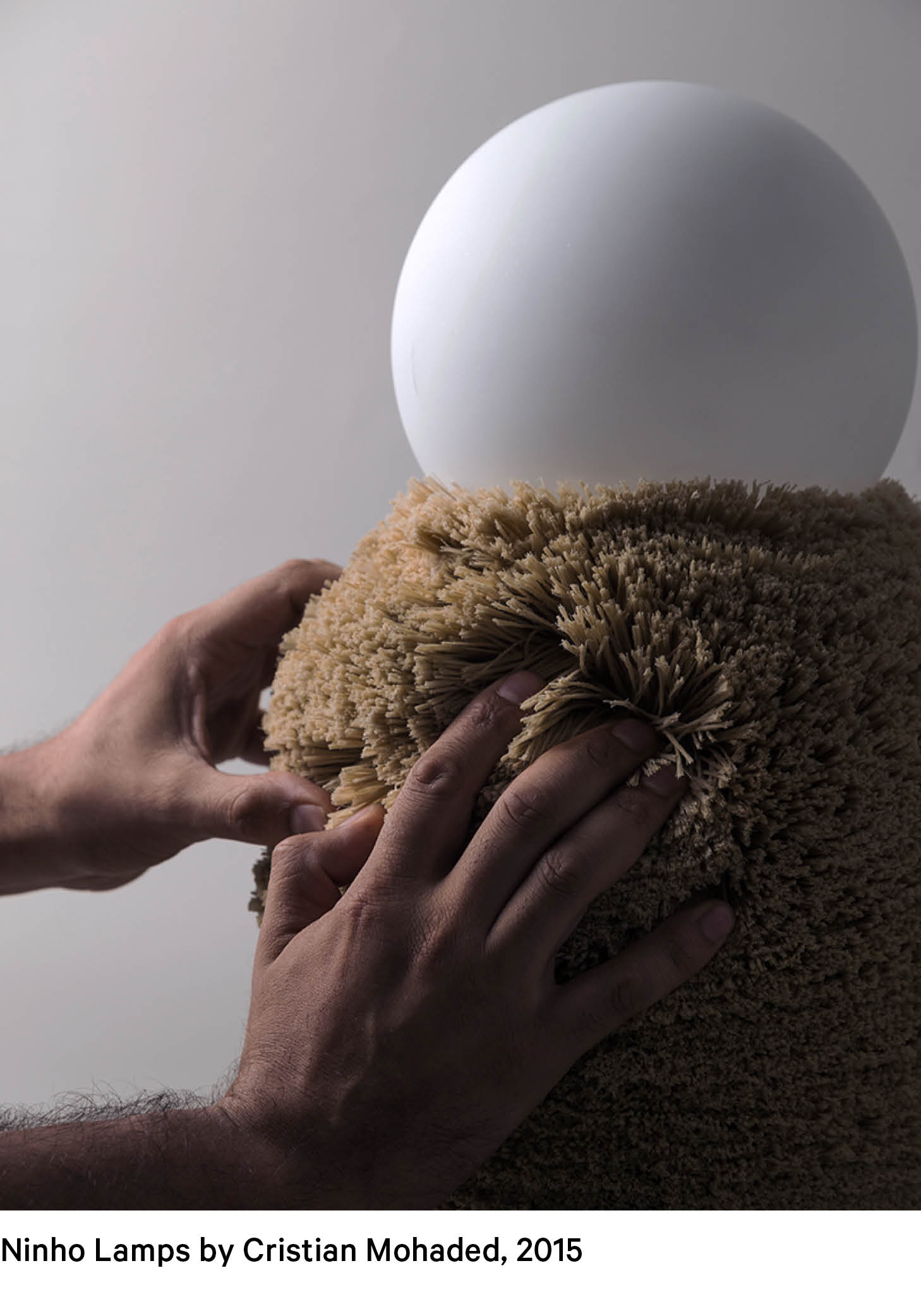
Marva: I discovered your work at SaloneSatellite 2018 when you participated in the “Africa & Latin America-Rising Design/Design Emergente” exhibition. On this occasion I invited Fernando and Humberto Campana, who were in charge of the curatorship of the Latin American Continent, and
you were one of the 18 people they specified. Your work ‘Ninho Collection’ was very well appreciated and from there I began to follow you, noting that some of your works are already in museums around the world. Can you tell me which ones? // ESP: Conocì tu trabajo en el SaloneSatellite 2018 cuando participaste a la muestra “Africa & Latin America-Rising Design/Design Emergente”. En esta ocasión invité a Fernando y Humberto Campana, que se ocuparon de la curatela del Continente Latinoamericano y fuistes uno de los 18 personajes que indicaron. Tu obra Ninho Collection fue muy bien apreciada y de ahì empezé a seguirte viendo que algunos de tus trabajos ya se encuentran en museos alrededor del mundo. Me puedes indicar cuales?
Cristián: NINHO (Nest in Portuguese) is one of the many research projects I have carried out that refer to materials and their application in the world of design. It is a beautiful project that focuses on reutilizing waste from industrial production. In 2014, the TWIST #2 chair that we designed in collaboration with Ricardo Blanco, who was a figurehead and master of Argentine design, and that after being presented at Gallery Bensimon in Paris and at the same time at MALBA, entered the prestigious permanent collection of the Musée des Arts Décoratifs in Paris.
And recently in 2019, after presenting ENTREVERO, an independent project which seeks to highlight the link between design and craftsmanship, the Philadelphia Museum of Art in the USA, acquired 3 of my pieces to incorporate them into the permanent design collection of the Museum. // ESP (Nido en Portugués) es uno de los tantos proyectos de investigación que realice que refieren a los materiales y su aplicación en el mundo del diseño. Es un hermoso proyecto que pone foco en los descartes de produccion. En el 2014, la silla TWIST #2 que diseñamos en colaboración con Ricardo Blanco _quien fue un grande referentes y maestro del diseño argentino_ y que luego de ser presentada en Gallery Bensimon en Paris y paralelamente en el MALBA, ingreso a la prestigiosa colección permanente del Musée des Arts Décoratifs de París. Y recientemente en el 2019, luego de presentar ENTREVERO _ un proyecto independiente, que busca resaltar estos diales entre el diseño y la artesanía _ el Philadelphia Museum of Art en USA, adquirió 3 de mis piezas para incorporarlas dentro de la colección permanente de diseño del museo.
Marva: You have been invited as curator / ambassador of your country, Argentina, by the London Design Biennial next June. How did this come around? // ESP: Has sido invitado como curador / embajador de tu país, Argentina, en el London Design Biennale que se festeja en Londres en el próximo mes de Junio. Como lo lograste?
Cristián: Yes, and I am extremely excited about this project, which will be presented in London, a beautiful project that bears the name “Monte Abierto” (Open Bush) with the curator Franca Lopez Barbera, a project that will represent my country at the Biennale. Different design studios in Argentina were invited to participate, and a selection committee made up of officials from the Directorate of Cultural Affairs of the Argentinean Foreign Ministry and other institutional bodies selected my project to be part of this Biennial. The installation is part of material research carried out in 2013 that seeks to revalue the technique of basketry with a vegetable fibre known as ‘simbol’, it exposes this inter-crossing and dialogue between Lorenzo, an artisan with whom I have been working for a decade, and my work as a designer. // ESP: Si, y estoy muy entusiasmado por este proyecto que se presentar en Londres, un hermoso proyecto que lleva el nombre de “Monte Abierto” (Open Bush) con la curadora de Franca Lopez Barbera, y será el proyecto que representara a mi país en esta oportunidad. Se convocaron a diferentes estudios referentes del diseños en Argentina, y un comité de selección que fue integrado por funcionarios de la Dirección de Asuntos Culturales de la Cancillería Argentina y otros organismo institucionales, selecciono mi proyecto para que sea parte de esta Bienal. La instalación forma parte de una investigación material llevada a cabo en el 2013 y que busca revalorizar la técnica de cestería con una fibra vegetal conocida como simbol, expone este entre-cruzamiento y dialogo entre Lorenzo _un artesano con quien trabajos hace ya una década y mi labor como diseñador.

Marva: What new projects are you working on and what can you tell us about them? // ESP: En que nuevos proyectos estas trabajando, nos contarías acerca de esto?
Cristián:In addition to various projects with national and international companies for the development of furniture and lighting, this September, after almost 15 years of profession as a designer, I will have my first individual exhibition at the National Museum of Decorative Art, where this meeting place between design and craftsmanship, between materials and processes, industry and technology is explored once again. It seeks to generate a more federal look at Argentine design, where limits and geographical areas fade to show that design can and should be collaborative, where unity has no value, but it is in the whole where the strengths are found. I decided to create a hybrid atmosphere from my resources and tools as a designer and my observation as an artist. // ESP: Ademas de diversos proyectos con empresas nacionales e internacionales, para el desarrollo de mobiliario y iluminacion, este año _luego de casi 15 anos de profesión como diseñador_ en Septiembre tendrá mi primer muestra individual en el Museo Nacional de Arte Decorativo, donde se explora nuevamente este lugar de encuentro entre el diseño y la artesanía, entre los materiales y los procesos, la industria y la tecnica. Que busca generar una mirada mas federal del diseño argentino, donde los limites y las zonas geográficas se desvanecen para poner de manifestó en que el diseño puede y debe ser colaborativo, donde la unidad no tiene valor, sino es en el conjunto donde se encuentran las fortalezas, decidí crear una atmósfera híbrida a partir de mis recursos y herramientas como diseñado y mi observación como artista.

Marva: Cristián, thank you very much for your answers, now the readers and I know much more about you and your successful career. We wish you all the more success in your future endeavours.// ESP: Querido Cristián, muchas gracias por tus respuestas, ahora los lectores de CC Tapis Magazine y yo sabemos mucho mas sobre ti y tu exitosa carrera. Son mis deseos que sigas cosechando éxitos.
cc-tapis would like to thank Marva Griffin for her enthusiasm, availability, kindness and her time in preparing this interview for cc-tapis.
We are extremely grateful, thank-you Marva.
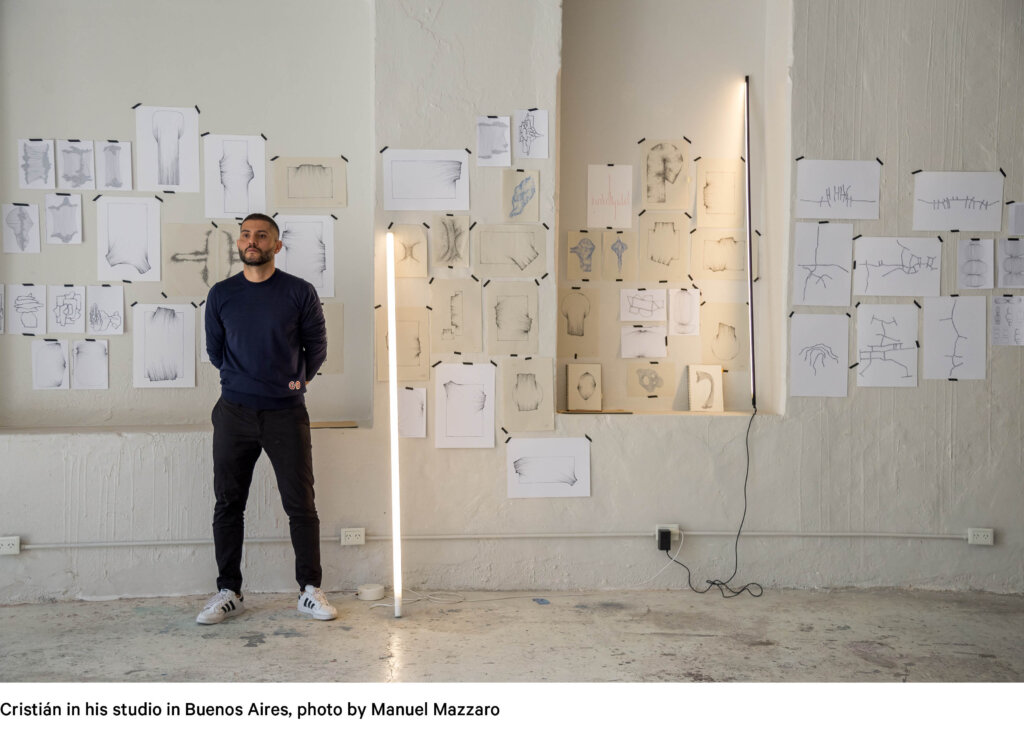
See the Fuga collection here >>>